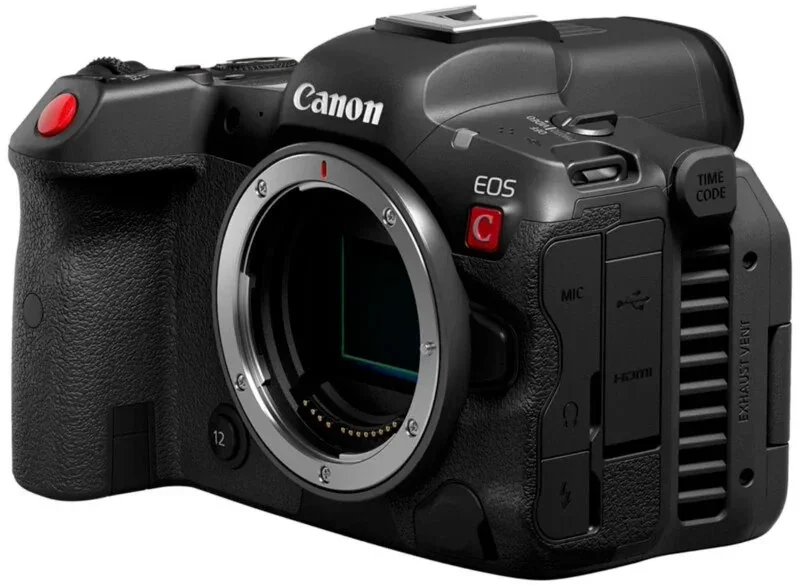3 月 3 日消息,苹果的 Vision Pro 头显拥有目前 AR / VR 设备中最高分辨率的屏幕之一,因此想要为其制作顶级的沉浸式内容,就需要一款性能强悍的相机。

近日,佳能高管团队在日本横滨举行的 CP+ 摄影展上接受采访时,讨论了 AR 和 VR 技术日益增长的普及趋势,并特别提到了苹果 Vision Pro。
据了解,佳能此前推出过一款专为制作 VR 内容而设计的镜头 ——5.2mm f / 2.8 L,他们似乎紧跟 VR 行业的脉搏,并已经关注该领域一段时间了。
佳能图像传播业务运营部顾问总监兼单位执行官 Kiyomi Tetsuji 表示:“从去年到今年,我亲眼目睹了 VR 需求的激增。因此,我相信 3D、VR 和 AR 的需求肯定会增加。”
佳能影像集团高级常务执行董事兼副总监 Tokura Go 补充说:“即使在苹果推出 Vision Pro 之前,VR 市场本身就已经在扩张,但它的推出肯定会进一步推动这个市场的发展。由于 Vision Pro 的分辨率极高,据我们所知,目前很难找到一款分辨率足以满足 Vision Pro 的 VR 系统。”
佳能表示,展望未来,研发一款相机和镜头系统来支持制作 Vision Pro 的沉浸式视频内容,很可能是一个新的商机或潜在市场。

目前,苹果提供了一系列沉浸式“环境”,可以让 Vision Pro 的佩戴者将自己置身于各种虚拟场景中。但在现实世界中,使用目前市面上现有的相机,在没有计算机图形帮助的情况下,要达到如此细节的还原程度和刷新率,是非常具有挑战性的。据推测,这些沉浸式素材的部分基础画面是使用 RED 8K 摄像机拍摄的,但苹果方面并未对此进行确认。而且,其中大部分环境也并非设计成近距离观看的,并且在 Vision Pro 中观看时,这些内容的比例似乎与目前市面上的相机拍摄的内容有所不同。存在一些动态画面,但大部分场景都是静止的。
如果想要制作一个包含动物、人物等多种元素的沉浸式景观呢?佳能认为,这将需要一套非常强大的相机系统才能做到栩栩如生。

佳能图像传播业务运营部顾问总监兼单位执行官 Shiomi Yasuhiko 表示:“要为 Vision Pro 制作视频,至少需要 1 亿像素的传感器。所以目前,我们无法满足这种级别的需求。但我推测,为 Vision Pro 提供图像的公司将需要拥有 1 亿像素的传感器,并且帧率达到 60 帧 / 秒。”
作为参考,1 亿像素相当于 14K,几乎是目前大部分高分辨率电影提供的分辨率的两倍。唯一符合要求的是 Sphere 公司的 Big Sky 相机,这是一个 18K 的庞然大物,需要 12 人操作。虽然它能满足需求,但它并未投入量产,考虑到成本,除了制作特定于 Sphere 的内容之外,它并不具备商业可行性。
14K 60 帧 / 秒是一个非常夸张的规格,目前市面上没有一款商用相机能够满足 Vision Pro 的分辨率和帧率要求。
在 2015 年的佳能博览会上,该公司展示了一个 1 亿像素的传感器,因此佳能之前已经涉足过这种级别的分辨率。然而,这种分辨率加上 60 帧 / 秒的要求实在太高了。
“因此,到目前为止,我们还没有能够做到这一点,使其具有商业可行性。但是,如果您不介意的话,请期待我们是否能做到这一点,” Tokura 补充道,“从技术上讲,理论上我们可以做到这一点。但是问题在于我们能否研发出商业上可行的产品,并且价格足够让客户负担得起。”
这一点值得强调,因为前面提到的 Big Sky 相机确实存在,但它非常专业,可以说在目前的状态下并不具备商业可行性。
不过,佳能正密切关注这一市场,并预计将朝着满足这些需求的方向发展。“这是一个目标,” Tokura 说。
“我们正在改进我们的技术,以便能够为 VR 目的提供高分辨率。我们将继续努力改进我们的技术,以便在分辨率和速度之间取得良好的平衡,” Shiomi 说。
来源:IT之家


